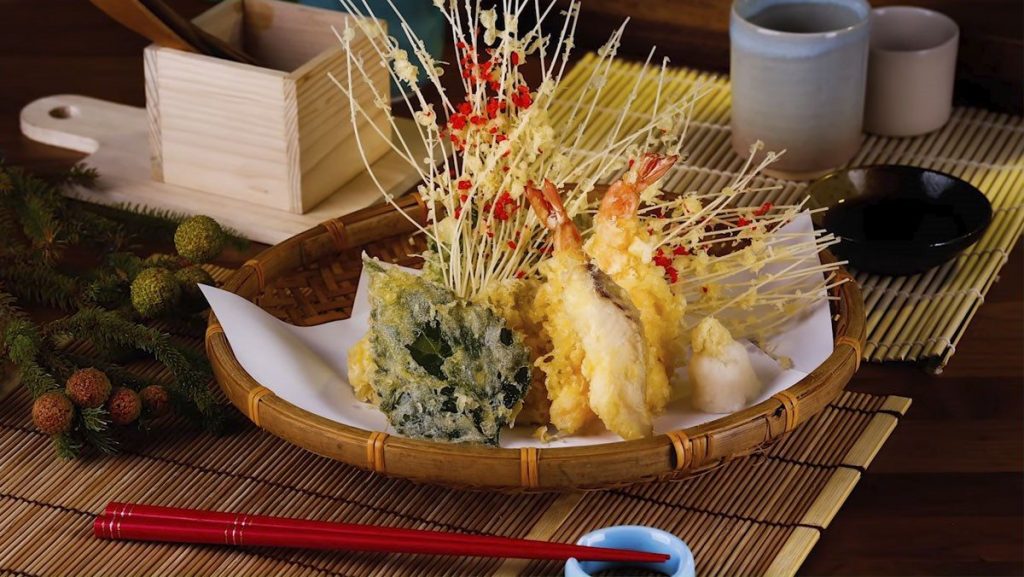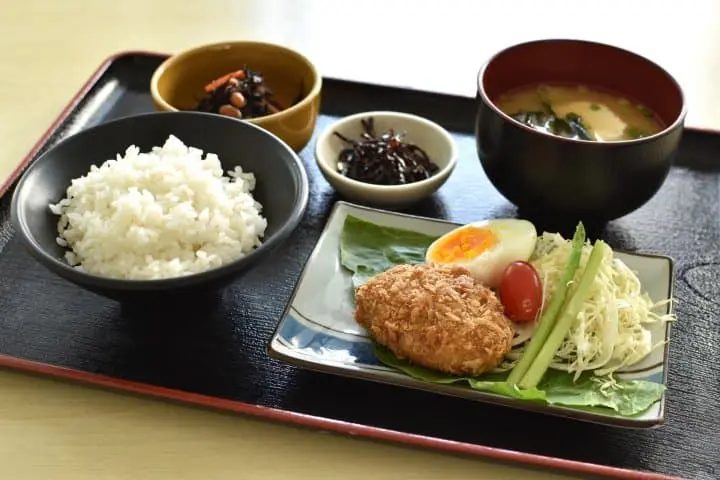Japanese food is the best because of its complex flavors, wide variety of sporadic sources of food, and unexpected health advantages. A typical Japanese dinner, which is based on blending principles, typically consists of rice or noodles, soup, pickles, and maybe one decent side dish of fish, meat, vegetables, or tofu.
Fish has a big influence on Japanese food, which also offers a lot of variety by utilizing seasonal ingredients. It is consistently innovatively created and the result of extensive historical periods. Then what dishes should you try during your wonderful experience here? Explore our article for more recommendations.
Sushi
Sushi consists of simply eating fish over rice that has been delicately cooked with vinegar. This dish starts to get interesting when they have a variety of flavors and textures, like acidic, rich uni (ocean imp roe), and full, succulent Amaebi (sweet shrimp). Even through its enviable reputation, sushi was originally a roadside snack. When visiting Japan, we can see that sushi is equal to a symbol, which is available on many travel packages. Take a glance at it on Booking.com to learn more. Moreover, if you decide to book a trip here, don’t forget to use the Booking.com promo code 10% to save your money.
Tempura
Tempura is a dish that is likely the most well-liked in Japan because it is tasty, healthy, fresh, and reasonable. Your choice of shrimp, fish, squid, veggies, or tofu is delicately battered and quickly rotisserie to avoid the absence of vital nutrients and minerals. Although tempura could be served on its own, it is typically served alongside rice or noodles and diversity of dipping sauces.

Sashimi
Similar to sushi, sashimi is served with flimsily cut crude fish or fish. This could attempt to represent different types of raw meat. Sashimi is eaten likewise to sushi when wasabi and soy sauce are added. Sashimi can be found at any fish market in Japan if you want to try this Japanese food. Even though chicken sashimi is made of raw chicken, it is still amazing for people who can’t eat raw fish, so you should think about tasting it whether you can.
Read more: What Is The Healthiest Breakfast Meat I Can Eat?
Ramen
Ramen, a dish made with stock, tare sauce (preparation), grain noodles, and fixings, is another delicacy that is uniquely Japanese food. Each spoon of ramen contains tare (or Kaeshi), a potent tightly packed essence with a strong flavor. It determines the ramen’s style, which can be divided into the following four major categories: Shoyu, Miso, Shio, and Tonkatsu. Although the noodles and garnishes add to the dish’s appeal, the flavorful stock is what makes this famous Japanese food so special.
Okonomiyaki
If you are going with a group, it is highly recommended that you order this Japanese food. In fact, okonomiyaki is a player made with your favorite ingredients that are then grilled in front of you and served like a hotcake. While cooking, a variety of ingredients are prepared, including tofu, cheddar, corn, onions, and various vegetables. The final point in making okonomiyaki more flavorful is to top it with dried bonito drops and a rich sauce with an earthy color.

Teppanyaki
Teppanyaki elevates the enjoyment of eating. You are positioned close to the chef as you observe him expertly prepare your food in front of you on his massive barbecue grill. This visceral demonstration of the chef’s cooking ability is a key component of the charm of teppan. In some of the larger accommodations, the teppan gourmet experts really pull off momentous trapeze artistry, impressing their audience of coffee shops while shuffling with their finely tuned cutting edges, snatching up tiny pieces with chopsticks, and that’s only the start. When visiting Japan, wear a camera while enjoying teppanyaki, and you will have created the greatest Japanese food vlog.
Unagi
Unagi also referred to as waterway eel, is typically grilled over charcoal and served with a yummy grill marinade. According to legend, unagi is the best remedy for Japan’s oppressive summer heat and humidity. A taste suggests old Japan, and the majority of eel-focused restaurants use a fantastic conventional approach. New unagi from the wild is listed from May to October. If you decide to go to Japan at this time, bring along a photo of your best Unagi endeavor. Before you travel, look up a place on Booking.com or in numerous online surveys.
Teishoku
Most restaurants offer set meals with some structure because they are extremely well known, especially around lunchtime. A typical set meal consists of rice, pickles, soup, and the main course of meat, fish, vegetables, or fish. The Teishoku feasting option is a fantastic way to experience traditional Japanese food because it provides a lot of food at affordable prices.

Kaiseki
Kaiseki, the haute cuisine of Japan, combines art and feasts. Kaiseki is our recommendation if you’re making a video about Japanese food. The food is served in a series of small dishes without a menu. Each dish uses fresh ingredients and is created to evoke the ebb and flow of the season. As a result, Kaiseki in each season will have a different flavor.
Wagyu
Wagyu is the Japanese food that we love more than any other. Any meat produced from the four main Japanese cow breeds—the Japanese Dark, Japanese Brown, Japanese Surveyed, and Japanese Shorthorn—is referred to as wagyu. The quality is excellent and there is an inherited propensity for heavy texture. You’ve probably heard people refer to it as Kobe burger. The more expensive, the more scrumptious, but you will absolutely adore your choice.
This must-try Japanese food is just a sample of the many regular experiences you can have in Japan. There are countless other things to discover and experience. Follow newsparq if you’re interested in learning more travel advice and tips.
